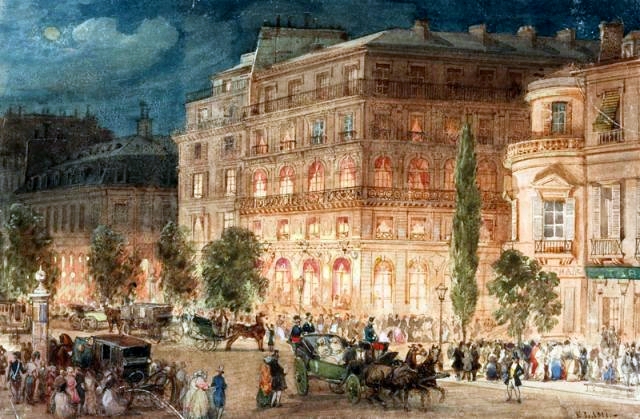I briefly chatted about Savarin here but surely the famous recipe deserves a post of its own and here it is.
A variation of Baba au Rhum, Savarin was developed in 1845 by two French pastrymakers and named after the magistrate, politician, gastronomist and culinary author Brillat-Savarin (1755-1826). It became an immediate success with French gourmets, like Brillat-Savarin's Physionomie du Goût that's been always in print since 1825. The dessert is quite extraordinary: it's loaded with butter, eggs, sugar, and cream and often garnished with crème pâtissière or Chantilly.
As far as gastronomy is concerned, Brillat-Savarin was a follower of Epicurus. The Greek philosopher, who lived in the Hellenistic period, advocated a life of wisdom, beauty, and justice but maintainted that none of these goods could be enjoyed without pleasure. He also believed in the pursuit of happiness, calm, and friendship. Unfortunately his ideals were misunderstood even during his lifetime. Pleasure was interpreted as something to do exclusively with satisfying bodily needs. The original ideas of Epicurus were adopted by several thinkers of the French Enlightenment as well as people of authority, like Brillat-Savarin who opposed gluttony. In his best-selling treatise on gastronomy, he claimed that simple meals were better than gourmet dishes, so long as they were carefully prepared. Educated in chemistry and medicine (as well as the Law), he strongly recocmmended a low-carb diet. Whether his followers, the culinary experts, believed in moderation is uncertain. A well-ripened French cheese developed around 1890 was renamed forty years later after Brillat-Savarin. It was soft, creamy, with 72% fat and packed with excess calories, just like the dessert. A specially designed mould for baking Savarin was also named after the French gastronomist.
 |
| Paris in the 1840s: Boulevard des Italiens (Eugène Lami) |
Savarin recipes were published in most best-selling cookbooks of the Victorian era. Elaborate versions were authored by professional chefs but there were also recipes that most urban families could easily afford. In order to re-create a more or less faithful version of the original Savarin at home, I looked up nineteenth century recipes from three different countries:
- FRANCE. As featured in The royal cookery book (1880) by Jules & Alphonse Gouffé, this version could feed several people. The dough was leavened with a sponge starter. The Anisette-flavored syrup, in which the finished cake was drenched, truly relieved the senses but the percentage of animal fat was probably a little too high for a dessert that was named after a follower of Epicurus.
- ENGLAND. Cassells new universal cookery (1894) by Lizzie Heritage featured a modest version of Savarin using less butter, eggs, and cream for the same amount of flour. At the end of the recipe, the author warned her readers that more authentic versions were published in other cookbooks.
- ITALY. A recipe with even less butter was featured in Science and the Kitchen and the Art of Eating Well (1891) by Pellegrino Artusi. No doubt the Italian author had read the work of Brillat-Savarin because he quoted him in the introductory note of his own chapter on sauces. However, he didn't know exactly how the dessert came to be named after the gastronomist and labelled it as 'Savarin' only because he thought it worthy of the French cuisine.
.JPG)
.JPG)
Comments